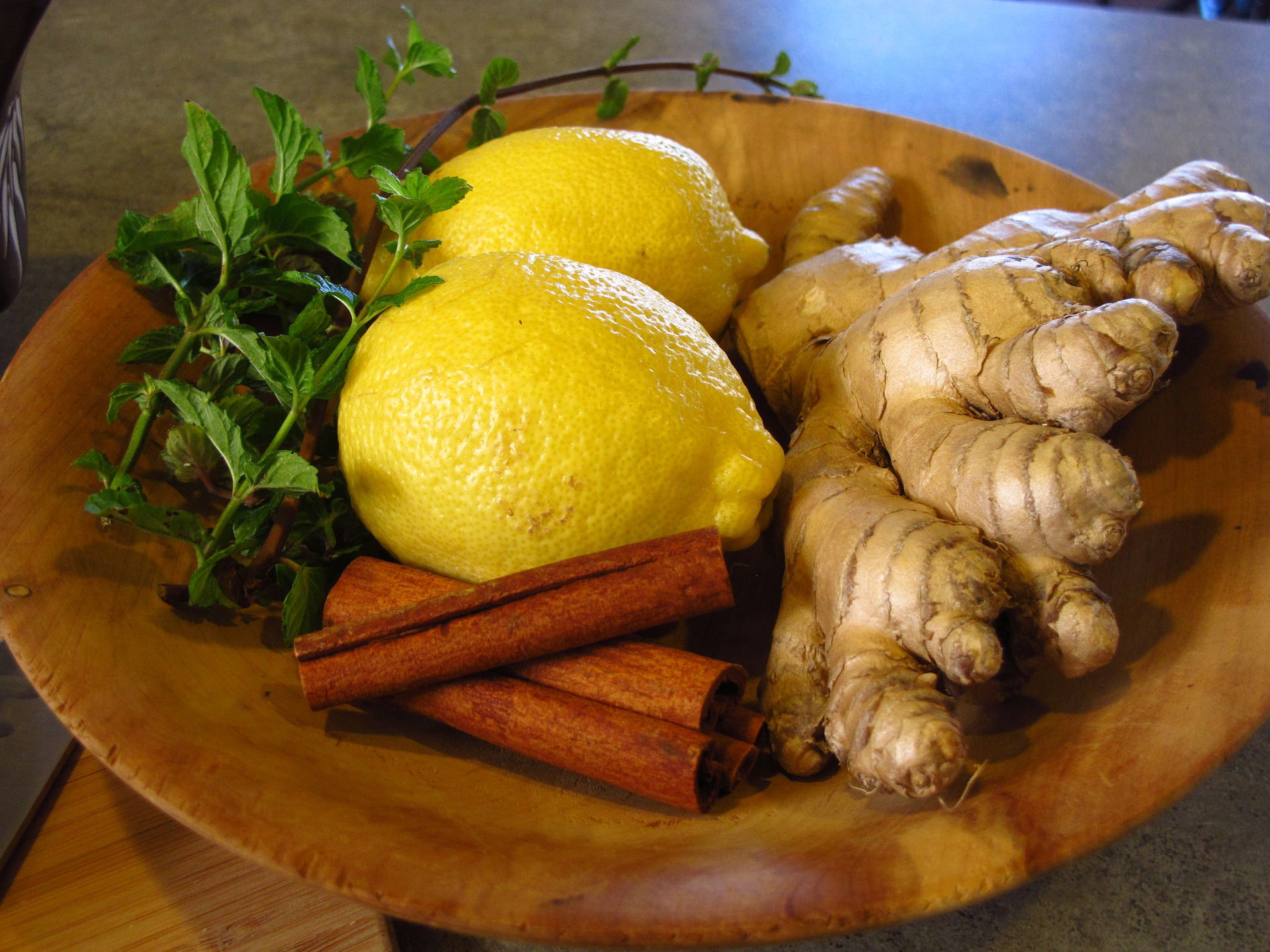Shanghai's Passion for Thai Cuisine
Shanghai, China has long been known for its diverse and dynamic food scene. However, in recent years, there has been an increasing craving for the bold flavors and unique ingredients of Thai cuisine. One ingredient in particular that has captured the attention of Shanghai's foodies is fresh ginger, a staple in Thai cooking. In this article, we'll explore the fascination with Thai ginger in Shanghai and delve into the significance of this ingredient in Thai cuisine. We'll also take a closer look at the health benefits of ginger, provide tips for using fresh ginger in your own cooking, and share where to find the best Thai ginger in the city. Join us on this flavorful journey as we explore the intersection of Thai and Chinese cuisine in Shanghai's food scene.

Introduction: Shanghai's Passion for Thai Cuisine
Shanghai is one of China's most vibrant and cosmopolitan cities, known for its rich history, stunning architecture, and diverse culinary scene. While the city is renowned for its own unique cuisine, Shanghai locals have a particular fondness for Thai food, which has become increasingly popular in recent years. One ingredient that is prominently featured in Thai cuisine, and which has become a staple in many Shanghai Thai restaurants, is fresh ginger. In this article, we explore the significance of ginger in Thai cuisine, its popularity in Shanghai, and the health benefits that come with consuming this versatile ingredient.
The Significance of Ginger in Thai Cuisine
The History of Ginger in Thai Cuisine
Ginger has been used in Thai cuisine for centuries, and is considered a fundamental ingredient in many Thai dishes. The ginger plant is native to Southeast Asia, and was likely introduced to Thailand by Indian traders who brought with them a wide array of spices and herbs. Since then, ginger has become an integral part of Thai culture and cuisine, and is used in a wide range of dishes, from curries and stir-fries to soups and salads.
The Role of Ginger in Thai Cooking
Ginger is valued in Thai cooking for its distinctive flavor and aroma, which is both spicy and slightly sweet. Fresh ginger is usually sliced or chopped and added to dishes early in the cooking process to infuse its flavor into the dish. It is also often used in marinades, sauces, and dressings. In addition to its flavor, ginger is also believed to have a number of medicinal properties, including aiding digestion, reducing inflammation, and boosting immunity.
The Different Types of Ginger Used in Thai Cuisine
In Thai cuisine, there are several different types of ginger that are commonly used. The most common is fresh ginger root, which is used in many different dishes. Galangal, which is a close relative of ginger, is another popular ingredient used in Thai cuisine, especially in soups and curries. Another type of ginger commonly used in Thai cooking is krachai, also known as fingerroot, which has a milder flavor and is often used in salads and stir-fries.

The Popularity of Thai Ginger in Shanghai
Shanghai's Love Affair with Thai Cuisine
In recent years, Thai cuisine has become increasingly popular in Shanghai, with a growing number of Thai restaurants opening up around the city. Shanghai locals have developed a particular fondness for the bold and spicy flavors of Thai food, and many have come to appreciate the unique flavor of fresh ginger, which is a common ingredient in many Thai dishes.
The Ubiquity of Fresh Ginger in Shanghai's Thai Restaurants
Fresh ginger is a staple ingredient in many Thai restaurants in Shanghai, and can be found in everything from curries and stir-fries to salads and soups. Many diners appreciate the distinctive flavor that ginger brings to these dishes, and some even seek out Thai restaurants based on the quality of their ginger-infused dishes.

The Health Benefits of Fresh Ginger
Ginger's Medicinal Properties
In addition to its culinary uses, ginger is also believed to have a number of health benefits. It is rich in antioxidants and anti-inflammatory compounds, and has been used for centuries in traditional medicine to treat a variety of ailments, from nausea and digestion problems to inflammation and arthritis.
The Role of Ginger in Digestion
One of the most well-known health benefits of ginger is its ability to aid digestion. Ginger has been shown to help relieve nausea, reduce bloating, and improve the absorption of nutrients in the body. For these reasons, many people enjoy a cup of ginger tea after a meal, or add fresh ginger to their cooking to help aid digestion. Whether you're a fan of Thai cuisine or simply looking to explore the many health benefits of fresh ginger, this versatile ingredient is one that is sure to please your taste buds and your body.
How to Use Fresh Ginger in Cooking
Fresh ginger has a unique flavor and aroma that can add a lot of depth to your dishes. Here are some tips on how to use fresh ginger in your cooking:
- Grate or mince fresh ginger and add it to stir-fries or soups.
- Use fresh ginger to add some zing to marinades and dressings.
- Brew fresh ginger tea by steeping sliced ginger in hot water for a few minutes.
- Mix grated ginger into baked goods, such as muffins or cookies, for a subtle yet distinct flavor.

Fresh Ginger Preparation Techniques
Before you start cooking with fresh ginger, it's important to properly prepare it. To prepare fresh ginger:
- Use a spoon to scrape off the skin.
- Cut off any knobs or bumps to create a smooth surface.
- Slice or chop the ginger into small pieces.
Alternatively, you can peel and slice ginger with a vegetable peeler or mandolin.
Recipes Using Fresh Ginger
Fresh ginger can be used in a variety of dishes, both sweet and savory. Here are some recipe ideas:
- Ginger chicken stir-fry: Sauté sliced chicken breast, garlic, and ginger in a pan. Add vegetables like bell peppers and snow peas, and finish with a sauce made from soy sauce, honey, and fresh ginger.
- Ginger pear muffins: Mix grated fresh ginger into muffin batter, along with diced pears and warm spices like cinnamon and nutmeg.
- Gingered carrot soup: Sauté chopped onions and ginger in a pot, add sliced carrots and chicken broth, and simmer until tender. Blend until smooth and serve with a dollop of sour cream.

Where to Find the Best Thai Ginger in Shanghai
If you're craving fresh Thai ginger in Shanghai, there are a few places you can look:
Specialty Markets and Stores
Specialty markets like City Shop and City Super often carry fresh Thai ginger, along with other international ingredients. You can also try visiting local wet markets, where you may be able to find fresh ginger imported from Thailand.
Online Retailers
For added convenience, you can order fresh Thai ginger from online retailers like Hema or Tmall. They often offer same-day delivery, so you can have fresh ginger delivered straight to your doorstep.
Conclusion: Exploring the Intersection of Thai and Chinese Cuisine in Shanghai's Food Scene
Shanghai's food scene is a melting pot of different cuisines and cultures, and the intersection of Thai and Chinese cuisine is no exception. By incorporating fresh Thai ginger into your cooking, you can add a new level of complexity to traditional Chinese dishes, or create fusion dishes that blend the best of both worlds. So next time you're in Shanghai, be sure to pick up some fresh Thai ginger and explore all the delicious possibilities!
In conclusion, the love for Thai ginger in Shanghai is a testament to the richness and diversity of the city's food culture. Whether you're a fan of Thai cuisine or simply looking to add some new flavors to your cooking, fresh ginger is a versatile and delicious ingredient that should not be overlooked. With its health benefits and unique flavor profile, it's no wonder that Thai ginger has captured the hearts and taste buds of Shanghai's foodies. We hope this article has inspired you to experiment with fresh ginger in your own cooking and explore new flavors and culinary traditions.

FAQs
1. What is the difference between Thai ginger and regular ginger?
Thai ginger, also known as galangal, is a member of the ginger family but has a distinct flavor that sets it apart from regular ginger. It has a citrusy, almost piney taste with a hint of spice and is commonly used in Thai, Indonesian, and Malaysian cuisine.
2. What are the health benefits of fresh ginger?
Fresh ginger has a variety of health benefits, including aiding digestion, reducing inflammation, and boosting the immune system. It is also high in antioxidants and may have anti-cancer properties.
3. How should I store fresh ginger?
Fresh ginger can be stored in the refrigerator for up to three weeks or in the freezer for up to six months. To store in the refrigerator, place it in a plastic bag or airtight container. To freeze, peel and chop the ginger, then place in a freezer bag or container.
4. Where can I find fresh Thai ginger in Shanghai?
Fresh Thai ginger can be found in specialty markets and stores throughout Shanghai, including City Shop, Ole', and Carrefour. It can also be purchased online from retailers such as Tmall and Taobao.
